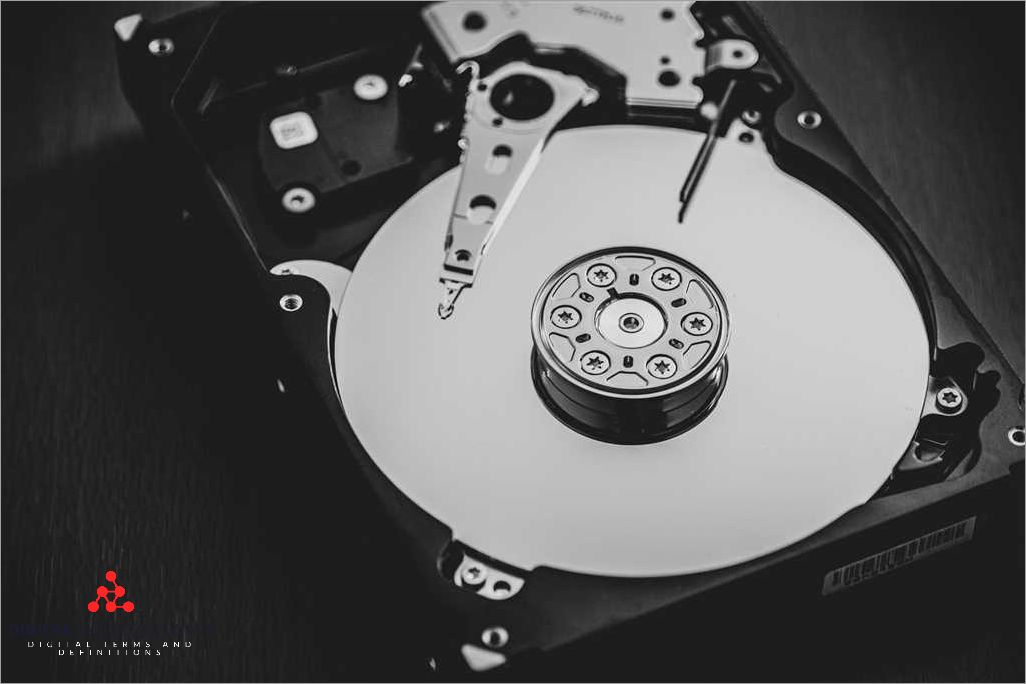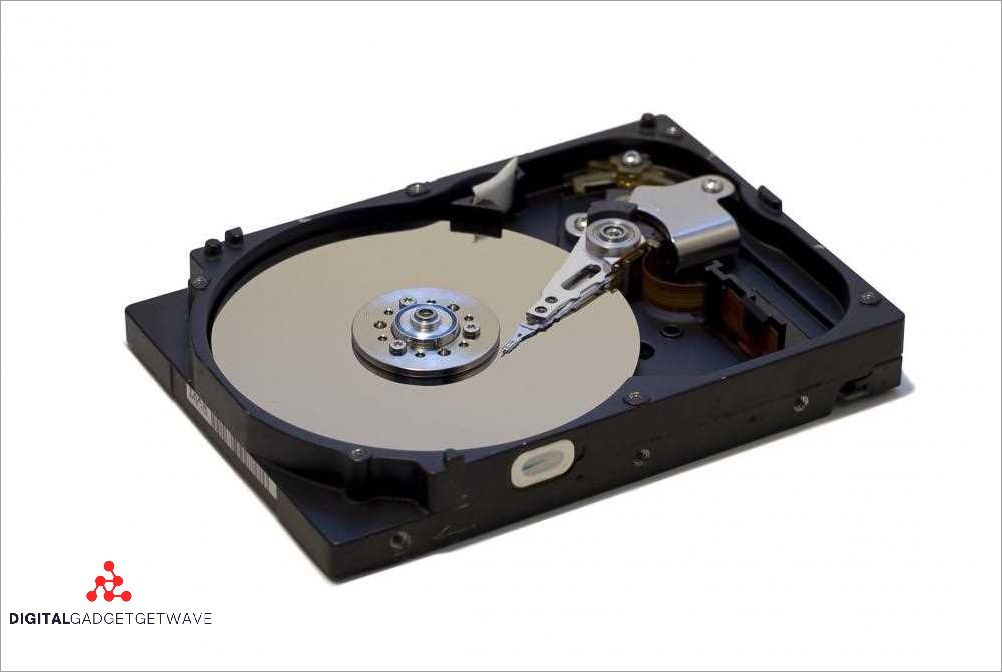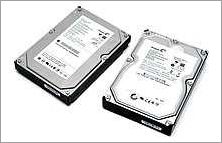
A fixed disk, also known as a hard disk drive (HDD), is a peripheral device used in computing systems for storing and retrieving digital data and information. It is a primary storage technology in computers and provides long-term storage for files and operating system software.
Unlike random-access memory (RAM), which is volatile and temporary, a fixed disk is non-volatile, meaning it retains data even when the computer is powered off. This makes it an essential component for storing large amounts of data in a permanent and reliable manner.
A fixed disk is a hardware component consisting of one or more magnetic disks, or platters, which are coated with a magnetic material. These platters spin at high speeds while an arm with a read/write head moves across the surface to access and store data. The data is organized into concentric circles called tracks, which further divide into sectors.
One of the key features of a fixed disk is its ability to be partitioned into separate logical drives. These partitions can be formatted to different file systems and used for different purposes, allowing users to organize and manage their data effectively. Additionally, fixed disks have become increasingly larger in storage capacity, with terabytes of space available on modern drives.
In conclusion, a fixed disk is an important electronic device used for long-term storage of data and information in computing systems. It provides non-volatile storage and allows for efficient organization and access to files and software. With advancements in technology, fixed disks continue to play a crucial role in modern computing and are essential for the digital age.
Contents
- 1 What is a Fixed Disk?
- 2 Definition
- 3 Importance
- 4 FAQ about topic “Understanding Fixed Disk: Definition and Significance”
- 5 What is a fixed disk?
- 6 How does a fixed disk work?
- 7 What are the advantages of using a fixed disk?
- 8 Can a fixed disk store both programs and data?
- 9 What are the limitations of a fixed disk?
What is a Fixed Disk?

A fixed disk is a hardware device that is an essential part of a computer’s storage system. It is also commonly known as a hard disk drive (HDD) or a hard drive. This electronic device is used for permanent storage of data and files in a computer system.
The fixed disk is a non-volatile memory that retains information even when the computer is turned off. It is designed to provide long-term storage capability for a computer and is used to store the operating system, applications, documents, and other digital files. The fixed disk is an integral component of the computer’s storage system and plays a crucial role in computing technology.
A fixed disk is typically divided into one or more partitions, which are logical sections of the disk. Each partition can have its own file system, allowing for efficient organization and management of data. The size and capacity of a fixed disk can vary, ranging from a few gigabytes to terabytes of storage space.
The fixed disk is connected to the computer through a data cable and is accessed by the computer’s operating system and applications to read and write data. It is a primary storage device for the computer, providing fast and reliable access to stored information.
With the advancement of technology, fixed disks have evolved, becoming smaller in size and larger in capacity. They have become an essential part of modern computing, enabling the storage and retrieval of vast amounts of data quickly and efficiently.
In summary, a fixed disk is a crucial peripheral device in a computer system that provides long-term storage capacity for data and files. It is an electronic device that is accessed by the computer’s operating system and applications, allowing for efficient organization and access to stored information.
Definition
A fixed disk, also known as a hard disk, is a technology device that is used for storage in computers. It is a non-volatile peripheral that provides a large capacity for storing digital information, such as files, documents, and programs.
The fixed disk drive is a hardware component of a computer system, usually built internally. It consists of one or more disk platters that rotate at high speeds. The data is stored magnetically on the disk surface, allowing for quick and easy access to the stored information.
The fixed disk is an essential part of a computer’s memory and computing capabilities. It provides a long-term storage solution, allowing users to save and retrieve data whenever needed. It is commonly used for storing operating systems, applications, user files, and other data.
The fixed disk is divided into partitions, which can be formatted and organized to suit the user’s needs. Each partition acts as a separate storage unit, with its own file system and access permissions. This allows for efficient management and organization of data on the disk.
In summary, a fixed disk is a crucial electronic device for storing and accessing data in a computer system. Its high storage capacity and quick access make it an essential component of modern computing technology.
Overview
A fixed disk, also known as a hard disk, is a hardware component of a computer system that is used for data storage. It is a non-volatile memory device, meaning it retains data even when power is turned off. Fixed disks have a large storage capacity and are commonly used in digital computing devices, such as personal computers and servers.
Fixed disks are composed of multiple circular platters made of a rigid material, typically aluminum or glass. These platters are coated with a magnetic material that stores digital information in the form of magnetized regions. The platters are stacked on top of each other and spin at high speeds, while read/write heads move across the surface to access and store data.
One of the key advantages of fixed disks is their large storage capacity. They can store vast amounts of data, ranging from gigabytes to terabytes, depending on the disk’s physical size and technology. This makes fixed disks ideal for storing operating systems, software applications, and user files.
Fixed disks provide random access to stored information, meaning the drive can retrieve any piece of data directly without having to read through the entire disk sequentially. This makes data retrieval faster and more efficient compared to other storage technologies, such as optical disks.
In addition to being used as the primary storage device for a computer system, fixed disks can also be partitioned into separate logical drives. These partitions act as separate storage spaces within the disk, allowing users to organize their data and keep different types of files separate.
Overall, fixed disks are a crucial component of modern computing systems, providing high-capacity storage and fast access to information. Their importance in the field of digital technology cannot be overstated, as they enable the storage and retrieval of vast amounts of data in a compact and efficient manner.
Components
A fixed disk, also known as a hard disk drive (HDD), is a critical component of a computer system. It is an electronic storage device that holds and retrieves digital data using magnetic storage technology.
The fixed disk is typically a non-volatile memory device, meaning it retains stored information even when the computer is turned off. It is used for long-term storage of files, documents, programs, and operating systems.
The main components of a fixed disk include the platters, the read/write heads, the actuator arm, and the spindle motor. The platters are circular, flat disks coated with a magnetic material that stores the data. The read/write heads float above the surfaces of the platters and are responsible for reading and writing data. The actuator arm moves the read/write heads across the platters to access different tracks and sectors, while the spindle motor rotates the platters at a constant speed.
The fixed disk is usually divided into partitions, which are logical units used to organize and manage the data stored on the disk. A partition can be assigned to a specific file system or operating system, allowing for efficient organization and access to data. The capacity of a fixed disk refers to the amount of data that can be stored on the disk, typically measured in gigabytes (GB) or terabytes (TB).
Access to data on a fixed disk is facilitated by the file system, which is responsible for managing the organization and retrieval of files. The file system tracks the location of each file on the disk and provides the necessary information for the operating system to access and manipulate the files. Various file systems, such as NTFS, FAT32, and exFAT, are used in different computing environments.
In summary, the fixed disk is an essential peripheral device in a computer system, providing large-capacity, non-volatile storage for digital data. Its component parts, including the platters, read/write heads, actuator arm, and spindle motor, work together to store, retrieve, and manage data efficiently. The file system plays a crucial role in organizing and accessing the data stored on the disk.
Importance

The fixed disk, also known as a hard disk drive (HDD), is a crucial peripheral in a computer system. It serves as the primary storage device, providing access to all the data and files necessary for the operation of the system.
As a hardware component, the fixed disk plays a vital role in computing. It is responsible for storing and retrieving digital data, both temporarily and permanently. By utilizing magnetic technology, the fixed disk can write and read data from its platters, ensuring efficient and reliable storage.
With its large capacity, the fixed disk allows for the storage of vast amounts of data, including operating systems, software applications, and user files. This allows users to conveniently store and access their important documents, multimedia files, and other digital content.
The fixed disk enables the creation of multiple partitions, which allows for the organization and separation of data. This means users can store their files in different drives or partitions, making it easier to locate specific data and manage storage space effectively.
Overall, the fixed disk’s importance lies in its ability to provide reliable and efficient storage for a wide range of digital content. Whether it is in a personal computer or a server system, the fixed disk is a crucial component that ensures the smooth operation of the computer system.
Data Storage
Data storage refers to the process of storing and preserving digital information for future use. It involves the use of various technologies and devices that act as peripheral components in a computer system.
A hard drive, also known as a fixed disk, is a common type of data storage device used in computing. It is a hardware component that is capable of storing and retrieving large amounts of data. Hard drives come in different capacities, ranging from a few gigabytes to several terabytes.
Data storage technology has evolved over the years, with the advancement of electronic and computing systems. Today, there are different types of data storage devices available, such as solid-state drives (SSD) and external hard drives. These devices offer faster access to data and higher storage capacities compared to traditional hard drives.
File storage is another important aspect of data storage. In a computer system, files are stored in a hierarchical structure, often divided into different partitions or directories. This allows for organized and efficient storage of data, making it easier to locate and access specific files.
Memory is an essential component of data storage. It refers to the temporary storage used by a computer system to store data that is actively being used. This includes data that is currently being processed or accessed by the central processing unit (CPU). Memory is crucial for the smooth operation of a computer system, as it allows for fast access to data and instructions.
Speed and Performance

The speed and performance of a fixed disk are crucial for the overall efficiency and functionality of a computer system. As a peripheral storage device, the fixed disk stores and retrieves large amounts of information quickly and efficiently. This speed and performance are vital for various aspects of technology and computing.
A hard disk drive (HDD), which is the primary hardware device for fixed disk storage, plays a significant role in determining the speed and performance of a computer system. It consists of rotating platters coated with magnetic material, which allows the device to store and access data electronically. The speed at which the platters spin and the data can be read or written directly impacts the speed and performance of the computer system.
In terms of access time, the fixed disk enables quick retrieval of data from various locations on the disk. The read and write heads of the drive can move along the platters to access specific sectors, tracks, and cylinders where the data is stored. This ability to locate and retrieve information swiftly enhances the overall speed and performance of the computer system.
Furthermore, the fixed disk plays a crucial role in storing and organizing the file system of a computer. It provides a large capacity for data storage and allows for the creation of multiple partitions to separate different types of data, such as the operating system files, applications, and personal files. This organization and management of data contribute to improved speed and performance as the computer system can access and retrieve the necessary files more efficiently.
Overall, the speed and performance of a fixed disk greatly influence the efficiency of a computer system. It enables quick access to stored information, efficient data retrieval, and effective organization of files and partitions. With the rapid advancements in technology, the speed and performance of fixed disks continue to improve, providing faster and more reliable storage for digital data in electronic computing.
Reliability
Reliability is a crucial factor when it comes to fixed disks in computing. A fixed disk, also known as a hard disk drive, is a digital storage device that plays a critical role in storing and retrieving large amounts of data in a computer system. The reliability of a fixed disk refers to its ability to consistently perform these functions without failure or loss of data.
One of the key factors in ensuring the reliability of a fixed disk is its hardware design. The physical components and mechanisms within the disk need to be built to withstand various environmental and operational factors that could potentially cause damage or failure. Manufacturers incorporate advanced technologies and materials to enhance the durability and resilience of the disk, protecting the stored data.
Another aspect that contributes to the reliability of a fixed disk is its data storage technology. Advanced techniques, such as error correction codes and redundancy schemes, are implemented to minimize the chances of data corruption or loss. Additionally, the file system and partitioning schemes used on the disk help in organizing the data in a systematic manner, reducing the risk of data fragmentation and improving overall reliability.
In terms of electronic reliability, the fixed disk is designed with multiple levels of error detection and correction mechanisms. Integrated controller chips monitor the data transfer process, ensuring that all the data is correctly read from or written to the disk. In case of any errors, the controller takes appropriate actions to rectify them, ensuring the integrity of the data.
Moreover, manufacturers conduct rigorous testing and quality assurance procedures during the production of fixed disks. This includes stress testing, temperature testing, and performance testing to ensure that the disks can operate reliably under various conditions and workloads. Additionally, continuous monitoring and firmware updates help in addressing any potential issues and improving the overall reliability of the disk.
In summary, the reliability of a fixed disk is crucial in maintaining the integrity and accessibility of data in a computer system. Through robust hardware design, advanced data storage technologies, and comprehensive testing procedures, manufacturers strive to provide reliable and durable storage devices that can meet the demanding requirements of modern computing environments.
FAQ about topic “Understanding Fixed Disk: Definition and Significance”
What is a fixed disk?
A fixed disk, also known as a hard disk drive or HDD, is a non-volatile storage device used for data storage in computers.
How does a fixed disk work?
A fixed disk consists of one or more platters coated with a magnetic material. These platters spin at a high speed while a read/write head moves across them to read or write data. The data is stored in binary format as magnetic fields on the platters.
What are the advantages of using a fixed disk?
Fixed disks have several advantages over other storage devices. They have large storage capacities, typically ranging from a few hundred gigabytes to several terabytes. They also have fast data access times, allowing for quick retrieval of information. Additionally, they are relatively inexpensive compared to other types of storage, making them an affordable option for most users.
Can a fixed disk store both programs and data?
Yes, a fixed disk can store both programs and data. Programs are stored as executable files, while data files can contain various types of information such as documents, images, videos, and more. The operating system and applications are usually installed on the fixed disk, allowing them to be accessed whenever needed.
What are the limitations of a fixed disk?
A fixed disk has a few limitations. First, it is a mechanical device with moving parts, which makes it susceptible to mechanical failure. Second, it is not portable and is typically installed inside a computer or external enclosure. Finally, a fixed disk is not suitable for long-term archival storage, as the magnetic fields on the platters can degrade over time.

